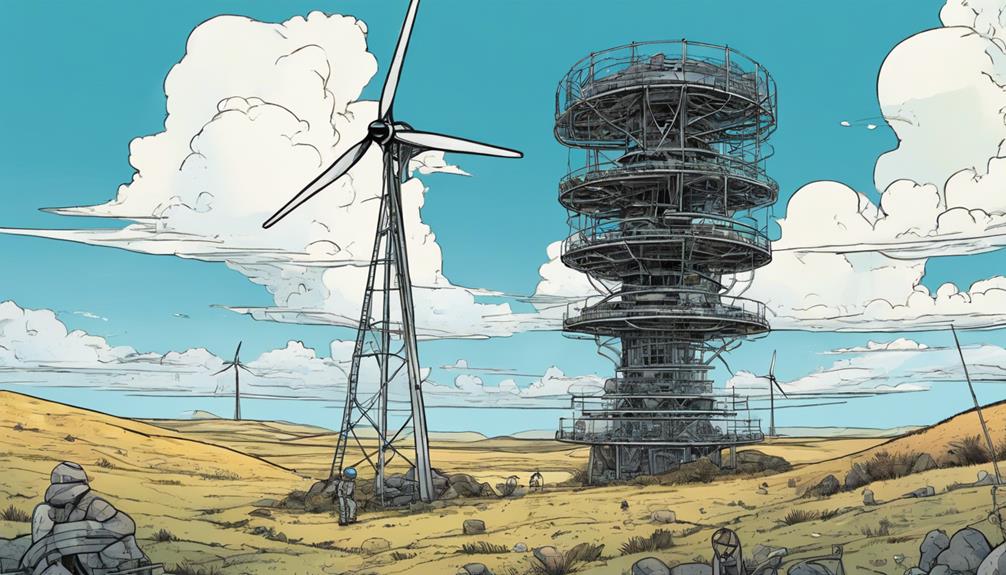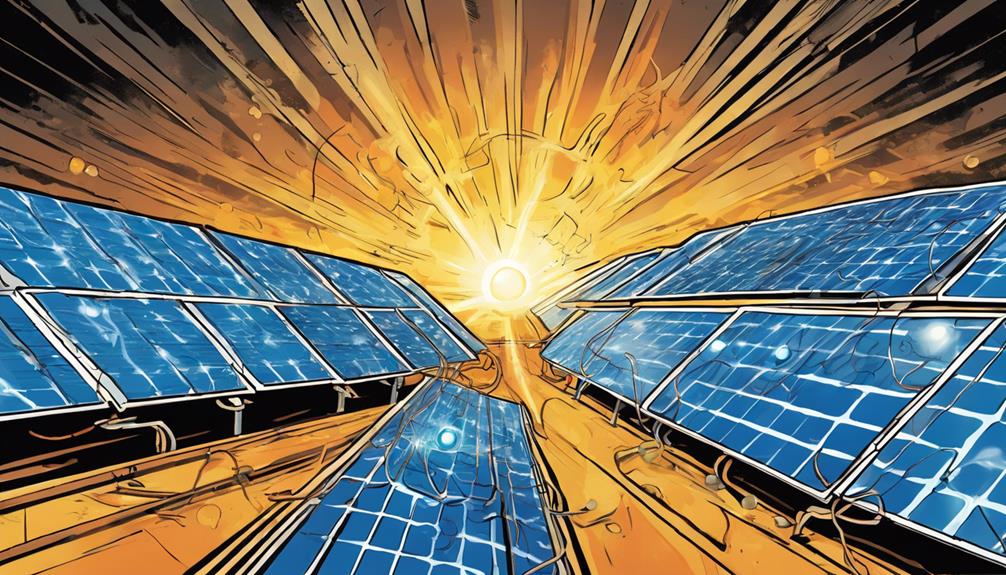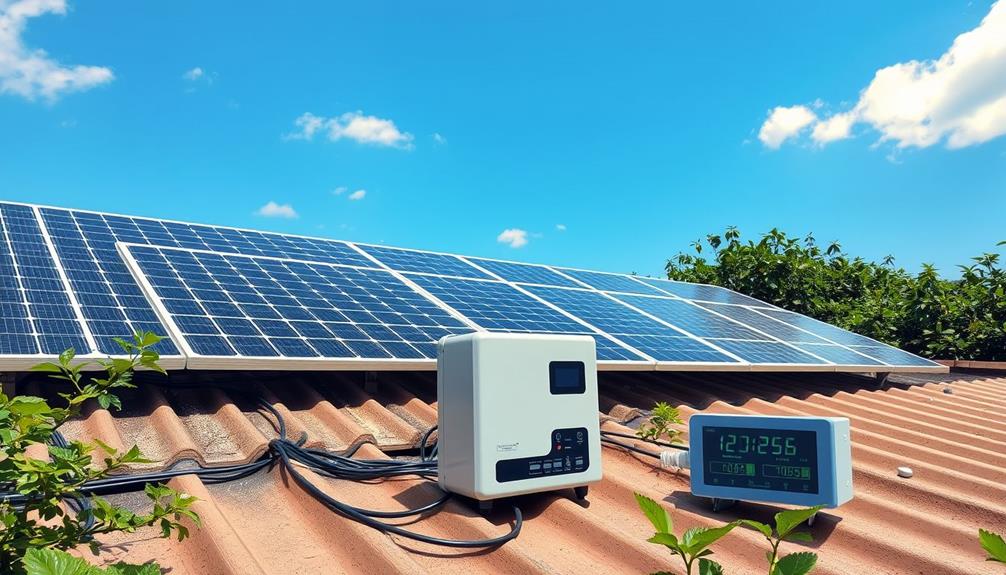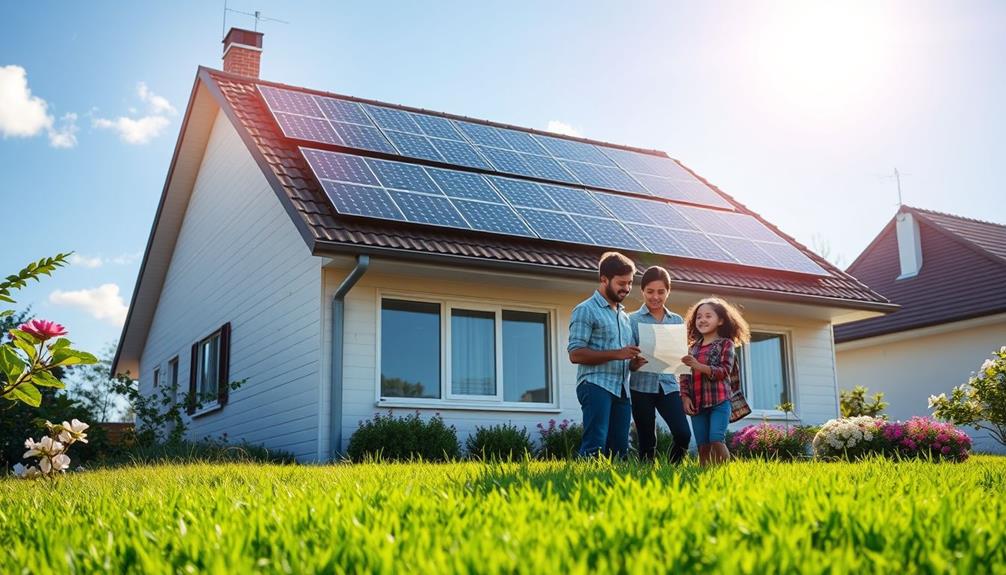To maximize my battery power, I focus on optimizing wind turbine charging efficiency. It all starts with selecting the appropriate turbine, taking into account factors like wind speed and turbine size to ensure effective energy conversion. Strategic positioning is also key, as it directly impacts power output. I make sure to choose the correct wiring and connections to prevent energy loss, and regular maintenance is essential to keep my system running at peak performance. By following these essentials, I can tap into my turbine's full potential and get the most out of my battery power – and there's even more to explore to elevate my energy harvest to the next level.
Key Takeaways
- High-efficiency wind turbines maximize power output and battery charging capacity, making them a crucial selection for optimal energy conversion.
- Strategic turbine positioning, considering wind direction and speed, is essential for peak energy production and efficient charging.
- Proper wiring and connections, including a charge controller, are vital for efficient energy transfer and preventing overcharging.
- Regular maintenance, including inspections and cleaning, ensures peak performance and prevents energy loss due to wear and tear.
- Matching turbine size to battery charging needs and considering factors like wind speed and direction optimize charging capacity and efficiency.
Understanding Wind Turbine Efficiency
As I delve into the realm of wind turbine charging, I've come to realize that understanding wind turbine efficiency is the linchpin to maximizing power output and battery charging capacity.
Simply put, wind turbine efficiency determines how well the turbine converts wind energy into electrical energy. The higher the efficiency, the more power it can generate, and the faster it can charge my batteries.
Factors like wind speed and turbine size substantially influence charging capacity. I've learned that efficient charging involves considering both power output and battery requirements.
Selecting the Right Turbine

When it comes to selecting the right wind turbine for battery charging, I look for high-efficiency models that can convert more wind energy into electricity, robust construction that can withstand harsh weather conditions, and quiet operation that minimizes noise pollution.
A turbine's efficiency directly impacts its ability to charge my battery, so I prioritize models with high efficiency ratings. I also consider the turbine's size and power output, ensuring it matches my battery's charging needs.
Easy installation is another key factor, as I want a user-friendly design with detailed instructions. By considering these factors, I can find the perfect wind turbine for my battery charging needs, maximizing my power output and reducing my reliance on traditional energy sources.
Optimal Turbine Positioning Guide

I strategically place my wind turbine to maximize its exposure to prevailing winds, carefully considering the direction and speed of the wind to guarantee peak energy production. Proper positioning is essential, as it directly impacts the turbine's efficiency and power output.
I make sure the turbine is installed at a safe distance from obstacles, such as trees or buildings, to avoid wind disturbance. Additionally, I take into consideration the wind turbine's height and direction to optimize energy production.
Wiring and Connection Essentials

To guarantee efficient and safe energy transfer, I choose appropriate wires with sufficient gauge to handle the current produced by the turbine, connecting them to a charge controller that regulates voltage and prevents overcharging.
I ensure tight connections and proper polarity when connecting the charge controller to the battery. A voltmeter helps me verify the voltage regulation, maintaining the desired battery voltage.
Secure connections are essential to prevent energy loss and ensure the best charging performance. I double-check the wiring and connections to avoid loose or damaged components that could compromise the system's efficiency.
Efficient Charging System Maintenance

Regular upkeep is crucial to maintaining my wind turbine charging system continues to operate at peak performance. I make it a habit to regularly inspect and clean the turbine blades, tower, and components to prevent energy losses and optimize efficiency.
I also check connections and wiring for damage or loose connections that may affect performance. Monitoring wind speed and direction helps me optimize positioning for maximum energy production. If issues arise, I troubleshoot by addressing loose connections, signs of wear and tear, and optimizing turbine performance.
Troubleshooting Common Issues

When issues arise, swift identification and resolution are crucial to minimize downtime and maintain optimal battery charging performance, and a thorough understanding of common problems and their solutions is key.
As I troubleshoot my wind turbine charging system, I've learned to identify signs of wear and tear, such as loose connections or damaged blades. I check the voltage regulator to guarantee it's functioning correctly and verify that the turbine is properly aligned with the wind direction.
By addressing these common issues promptly, I can prevent minor problems from becoming major headaches.
Regular maintenance and troubleshooting have become an essential part of my routine, ensuring my wind turbine charging system runs smoothly and efficiently.
Maximizing Power Output Potential

I optimize my wind turbine's power output by carefully balancing its placement, direction, and maintenance to guarantee it captures the maximum amount of wind energy.
Proper positioning is essential, as it directly impacts the turbine's efficiency and power output. I ensure my turbine faces the prevailing wind direction and avoid obstacles that could obstruct wind flow.
Regular maintenance is also crucial, as it prevents wear and tear that can reduce power output. I inspect and clean the turbine blades, tower, and components regularly to maintain peak performance.
Frequently Asked Questions
Can I Use a Wind Turbine to Charge Multiple Batteries Simultaneously?
'I've wondered if I can charge multiple batteries at once with a wind turbine. The answer is yes, but it requires a suitable charge controller and wiring to guarantee safe, efficient charging.'
How Often Should I Inspect the Turbine Blades for Damage or Wear?
I inspect my turbine blades every 3-6 months for signs of damage or wear, as regular maintenance guarantees peak performance, prolongs lifespan, and prevents unexpected shutdowns.
What Is the Ideal Distance Between the Turbine and the Battery Bank?
'Surprisingly, the best distance between the turbine and battery bank isn't a one-size-fits-all answer. I consider the wire gauge, voltage drop, and energy loss to determine the most suitable distance, ensuring efficient energy transmission.'
Can I Install a Wind Turbine on a Moving Vehicle or Boat?
I'm hesitant to install a wind turbine on a moving vehicle or boat, as it'd be challenging to maintain best turbine positioning and stability, which are important for efficient energy generation and battery charging.
How Do I Determine the Optimal Turbine Size for My Specific Energy Needs?
I determine the best turbine size by calculating my energy needs, considering factors like wind speed, battery capacity, and power output. I then match these requirements to the turbine's specifications.
What Are the Essential Charging Essentials for Wind Turbine Battery Power?
When it comes to wind turbine battery power, essential charging essentials are crucial for boosting energy flow efficiency. These essentials may include state-of-the-art battery management systems, efficient charging controllers, and reliable power converters. By optimizing these components, the wind turbine’s battery power can be maximized for effective energy storage.
Conclusion
As I look back on my journey, I've learned that harnessing wind power is a wild card – it can be a game-changer, but only if you play your cards right.
By following these essentials, you'll be well on your way to maximizing your battery power and reaping the rewards of renewable energy.
Remember, a well-oiled machine is key, so stay on top of maintenance and troubleshooting to keep your system running like a well-greased wheel.










